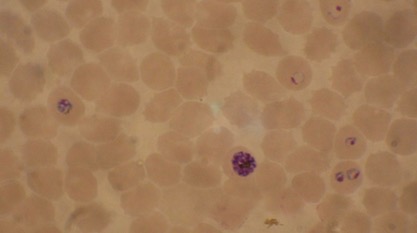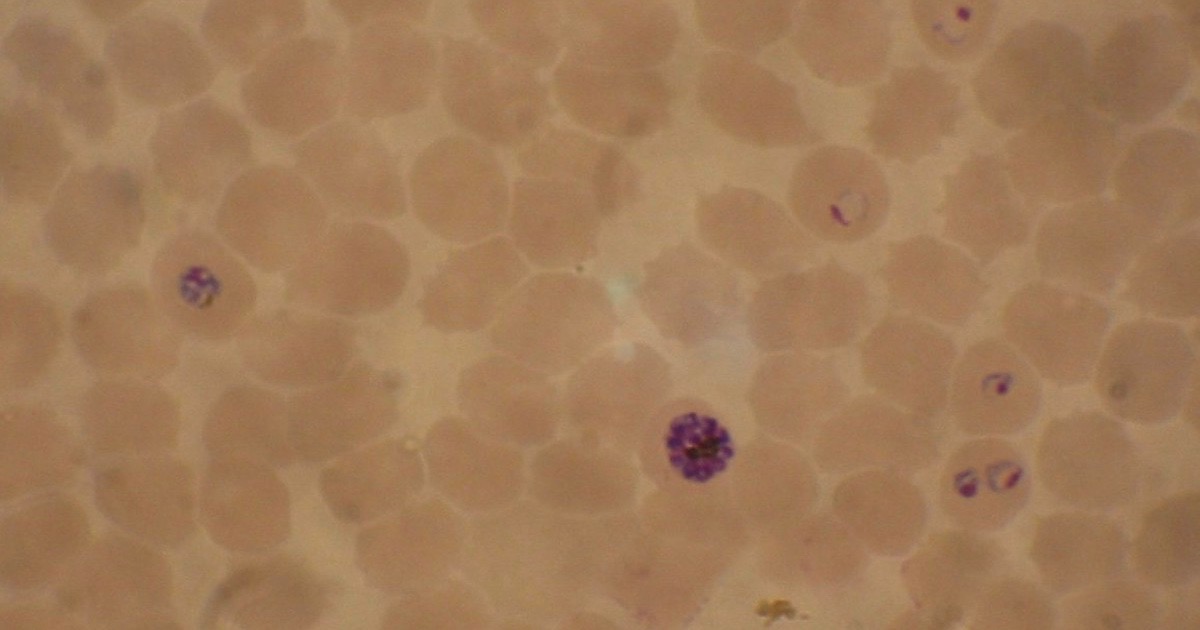 Evolution
Evolution
On Chloroquine Resistance, Nathan Lents Severely Misrepresents Behe’s Arguments


Words matter. What people say matters. If you’re going to engage with an individual you disagree with, it’s important to know what that person argues and to state it accurately. To misrepresent arguments is especially ironic if you are accusing your opponent of failing to engage with critics.
Such is the case with Nathan Lents, the biologist at John Jay College who appears as the lead author of the review in Science attacking Darwin Devolves. Now Lents has contributed an article to the geeky pop culture website Adventures in Poor Taste. It’s the usual stuff, charging that Michael Behe promotes “pseudoscience,” “outright ignores” most of the science that opposes him, and commits what “borders on academic dishonesty.”
Professor Lents focuses on Behe’s points about chloroquine resistance, a topic that Evolution News has recently covered in some detail. Once more, Lents represents Behe in a highly inaccurate manner.
Chloroquine Resistance Can Evolve
Professor Lents begins by fundamentally misstating Behe’s position:
In The Edge of Evolution, Behe made the grand claim that natural selection couldn’t even coax the malaria parasite into resistance to chloroquine because it requires at least two mutations.
In fact, in The Edge of Evolution Behe fully recognizes that standard evolutionary mechanisms produced chloroquine resistance in P. falciparum, the main parasite that causes malaria. That’s the whole point: Behe finds that chloroquine resistance is within the “edge of evolution” because in a rapidly multiplying protozoan such as P. falciparum there are enough trials to produce the complex trait:
Even though the odds are tremendously stacked against it, P. falciparum was able to develop chloroquine resistance because there are an enormous number of parasitic cells (about a trillion) in an infected patient’s body, and about a billion infected people in the world in a year. So the parasite has the population numbers to get around the terrible odds. (The Edge of Evolution, p. 59)
But Behe also observes that if an equivalently complex trait were required to arise within a species such as humans, it probably could not do so on a reasonable evolutionary timescale. Here’s what Behe says (emphasis in the original):
The likelihood that Homo sapiens achieved any single mutation of the kind required for malaria to become resistant to chloroquine — not the easiest mutation, to be sure, but still only a shift of two amino acids-the likelihood that such a mutation could arise just once in the entire course of the human lineage in the past ten million years, is minuscule — the same order as, say, the likelihood of you personally winning the Powerball lottery by buying a single ticket.
On average, for humans to achieve a mutation like this by chance, we would need to wait a hundred million times ten million years. Since that is many times the age of the universe, it’s reasonable to conclude the following: No mutation that is of the same complexity as chloroquine resistance in malaria arose by Darwinian evolution in the line leading to humans in the past ten million years. (The Edge of Evolution, pp. 60-61)
In Behe’s view, Darwinian evolution can do some things, but can’t do certain other things. He sets out to understand its limits. In this context, chloroquine resistance illustrates the power of the Darwinian mechanism. When Behe introduces the idea of chloroquine resistance, he notes that it shows “evolution is powerful”:
Although it does not yet look as if we’re headed back to the bad old days, the war between humanity and P. falciparum has reached an uneasy stalemate. To our chagrin, the unexpected stubbornness of the parasite proves that evolution is powerful for foes and friends alike. (The Edge of Evolution, p. 45)
He later notes that chloroquine resistance is a “crystal clear example” of what Darwinian evolution can accomplish:
The development of drug resistance in malaria, like the development of the sickle cell gene and thalassemia in humans, is a crystal clear example of Darwinian evolution in action. We see it all right there-the selective pressure exerted on malaria by toxic drugs, the occasional mutations that make one bug more fit than its kin, the spreading of the mutation through the population. (The Edge of Evolution, pp. 51-52)
Behe never says that chloroquine resistance is too complex to evolve. As was explained previously, he observes that it does evolve and he cites public health data showing that it arises in approximately 1 in 1020 cells. The point is that while there are enough P. falciparum cells to produce this trait, a similarly rare trait could not arise in humans on a reasonable timescale because there are too few individuals (i.e., not enough trials). Lents has not understood this argument. His presentation sets up a straw man.
Not a Word?
Lents proceeds to advance another falsehood: that Behe has refused to comment on a paper that discussed the mutations involved in the evolution of the trait:
In 2014, Summers et al. published their discovery of multiple malaria isolates that had evolved resistance to chloroquine through the accumulation of at least two mutations, neither of which was sufficient on its own. So what did Behe have to say about a discovery that natural selection accomplished exactly the thing that he claimed it could not?
Not a word….
Behe said “not a word” on Summers et al. (2014)? False. Behe wrote at least ten articles about the paper soon after it came out, explaining how the Summers paper validated Behe’s suspicions that chloroquine resistance required multiple mutations to evolve. Here’s a list:
- “A Key Inference of The Edge of Evolution Has Now Been Experimentally Confirmed”
- “Guide of the Perplexed: A Quick Reprise of The Edge of Evolution”
- “It’s Tough to Make Predictions, Especially About the Future”
- “The Edge of Evolution: Why Darwin’s Mechanism Is Self-Limiting”
- “An Open Letter to Kenneth Miller and PZ Myers”
- “Laurence Moran’s Sandwalk Evolves Chloroquine Resistance”
- “How Many Ways Are There to Win at Sandwalk?”
- “Kenneth Miller Resists Chloroquine Resistance”
- “Drawing My Discussion with Laurence Moran to a Close”
- “The Many Paths of Kenneth Miller”
Putting Words in Behe’s New Book
Lents then wrongly claims that Behe writes about this topic in Darwin Devolves:
In fact, Behe reprises his argument about chloroquine in Darwin Devolves and fails to mention this discovery at all.
But as has already been observed here, chloroquine resistance is barely mentioned in Darwin Devolves. Behe spends less than half a paragraph on it — to be precise, just two sentences. That’s less space than Lents and his co-authors devote to the subject in their Science review, and far less space than Lents does in his Poor Taste article. What Behe does say in Darwin Devolves isn’t to deny that Darwinian evolution can produce the trait. Quite the opposite, his point is precisely that Darwinian evolution did produce the trait, but that this doesn’t show that the power of Darwinian mechanisms is spectacularly great:
As I noted in The Edge of Evolution, in an astronomical number of malaria cells exposed to the antibiotic chloroquine, no fancy alternative evolutionary mechanisms helped the parasite develop resistance. Only a couple of classical random point mutations in the gene for a single protein plus run-of-the-mill Darwinian natural selection were effective. (Darwin Devolves, p. 252)
Having thus erected another straw man, Lents goes in for what he thinks is the kill:
Given that the article was published in the top-tier (and open-access) journal Proceedings of the National Academy of Sciences and directly rebuts a specific claim that [Behe] made, there is no way that he could have missed it. His omission borders on academic dishonesty.
Lents made a similar accusation in his Science review, and Evolution News has already explained the simple reason why Behe doesn’t mention Summers in Darwin Devolves: it’s because chloroquine resistance is hardly a topic of the book.
Lents’s entire narrative about Behe and Summers et al. (2014) makes no sense. Behe doesn’t believe that the paper “directly rebuts a specific claim that he made” because Behe never claimed that chloroquine resistance can’t evolve. Summers et al. vindicates a specific claim Behe made — which is why Behe has written about this paper so much in the past! In The Edge of Evolution Behe predicted that at least two simultaneous mutations were probably required for chloroquine resistance to evolve. That’s exactly what Summers et al. discovered. Behe wrote:
Since two particular amino acid changes occur in almost all of these cases [of chloroquine resistance], they both seem to be required for the primary activity by which the protein confers resistance. (The Edge of Evolution, pp. 49, 51)
Professor Behe later explains that for chloroquine resistance “presumably … two [mutations] are needed” because “if a single mutation could help chloroquine resistance would originate much more frequently.” (p. 59)
Here is what Summers et al. (2014) finds:
A minimum of two mutations sufficed for (low) CQ [chloroquine] transport activity… The findings presented here reveal that the minimum requirement for (low) CQ transport activity in both the ET and TD lineages of CQR [chloroquine resistant] PfCRT is two mutations.
Summers reported new research that gave us more knowledge than was available when Behe wrote The Edge of Evolution. The point here is that Behe’s prediction was evidently correct.
In Other Words
To put the whole thing another way, Lents claimed that Behe said X and then refused to discuss paper Y because it showed X wasn’t true, and this makes Behe guilty of “academic dishonesty.” The truth is that Behe claimed the opposite of X and also predicted Z, and discussed paper Y extensively precisely because it showed Z was true.
To fill in the variables:
- X is the claim that chloroquine resistance can’t evolve by Darwinian mechanisms.
- Y is Summers et al. (2014) in Proceedings of the National Academy of Sciences.
- Z is the prediction that two simultaneous mutations are probably required for minimal chloroquine resistance to emerge.
In the same article, Lents goes on to wrongly claim that Behe ignores exaptation in his new book. As noted earlier today, this claim too is false. What a mess.
Photo: Plasmodium falciparum, by Lukas.S at English Wikipedia (Original text: Lukas 05:24, 5 October 2006 (UTC)) [Public domain], via Wikimedia Commons.
